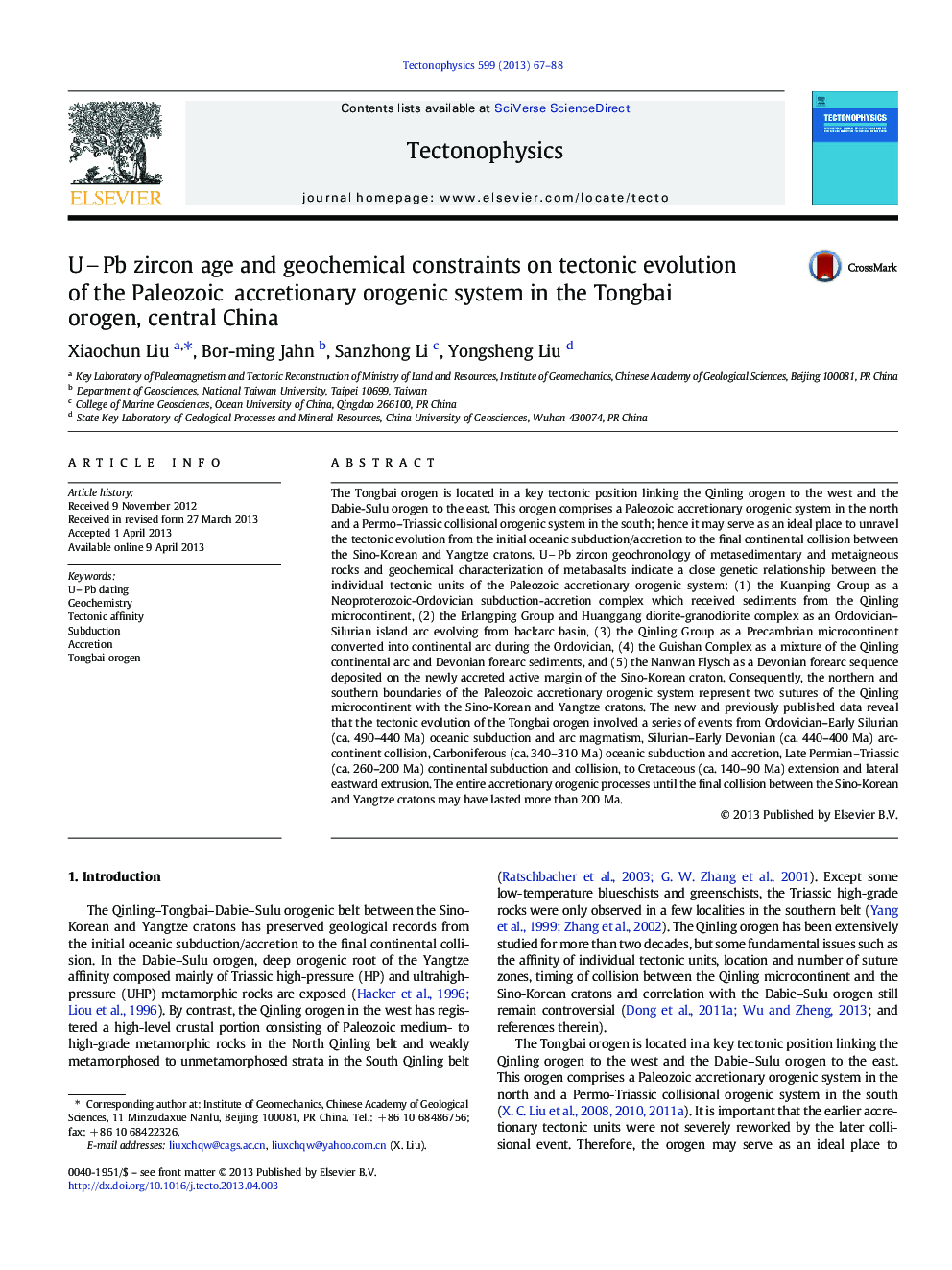| کد مقاله | کد نشریه | سال انتشار | مقاله انگلیسی | نسخه تمام متن |
|---|---|---|---|---|
| 4692338 | 1636788 | 2013 | 22 صفحه PDF | دانلود رایگان |

• Kuanping, Erlangping, Qinling, Guishan and Nanwan units have close genetic relations.
• Evolution of Tongbai orogen involved a series of events from accretion to collision.
• Accretionary processes between Sino-Korean and Yangtze cratons have lasted > 200 Ma.
The Tongbai orogen is located in a key tectonic position linking the Qinling orogen to the west and the Dabie-Sulu orogen to the east. This orogen comprises a Paleozoic accretionary orogenic system in the north and a Permo–Triassic collisional orogenic system in the south; hence it may serve as an ideal place to unravel the tectonic evolution from the initial oceanic subduction/accretion to the final continental collision between the Sino-Korean and Yangtze cratons. UPb zircon geochronology of metasedimentary and metaigneous rocks and geochemical characterization of metabasalts indicate a close genetic relationship between the individual tectonic units of the Paleozoic accretionary orogenic system: (1) the Kuanping Group as a Neoproterozoic-Ordovician subduction-accretion complex which received sediments from the Qinling microcontinent, (2) the Erlangping Group and Huanggang diorite-granodiorite complex as an Ordovician–Silurian island arc evolving from backarc basin, (3) the Qinling Group as a Precambrian microcontinent converted into continental arc during the Ordovician, (4) the Guishan Complex as a mixture of the Qinling continental arc and Devonian forearc sediments, and (5) the Nanwan Flysch as a Devonian forearc sequence deposited on the newly accreted active margin of the Sino-Korean craton. Consequently, the northern and southern boundaries of the Paleozoic accretionary orogenic system represent two sutures of the Qinling microcontinent with the Sino-Korean and Yangtze cratons. The new and previously published data reveal that the tectonic evolution of the Tongbai orogen involved a series of events from Ordovician–Early Silurian (ca. 490–440 Ma) oceanic subduction and arc magmatism, Silurian–Early Devonian (ca. 440–400 Ma) arc-continent collision, Carboniferous (ca. 340–310 Ma) oceanic subduction and accretion, Late Permian–Triassic (ca. 260–200 Ma) continental subduction and collision, to Cretaceous (ca. 140–90 Ma) extension and lateral eastward extrusion. The entire accretionary orogenic processes until the final collision between the Sino-Korean and Yangtze cratons may have lasted more than 200 Ma.
Journal: Tectonophysics - Volume 599, 25 June 2013, Pages 67–88